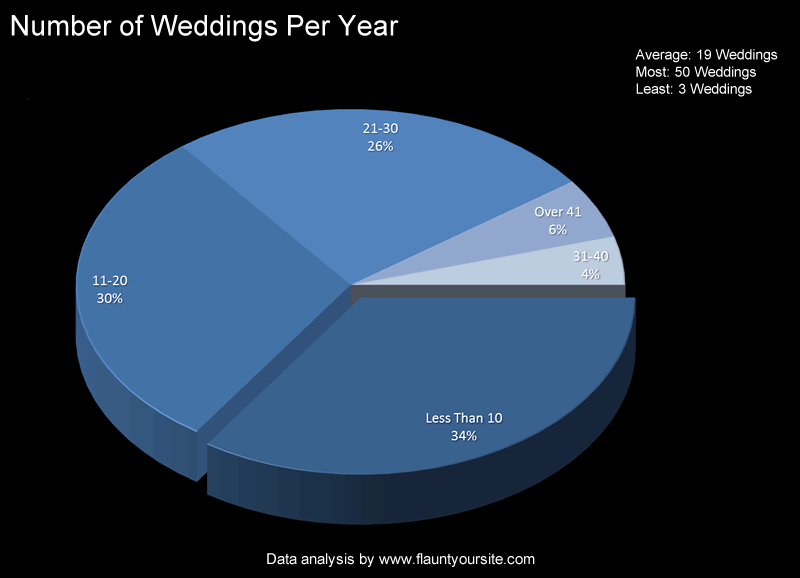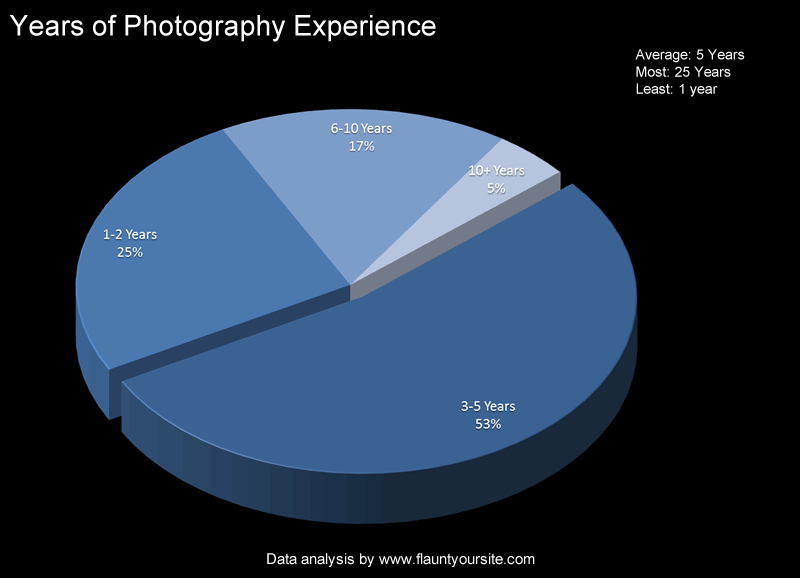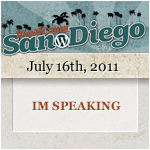2011 Wedding Photography Industry Pricing
About a month and a half ago there was a Google Doc making the rounds in the Wedding Photography circles. It got shared a few times on Twitter and ended up amassing 112 anonymous entries from all over the world sharing their wedding package pricing and other information. I was looking at the data the other day, and thought how incredibly awesome it was that we live in a time where:
- Photographers have become open about their pricing
- The internet allows us to see the global trends almost instantly
- That data is easy to access and free
Wedding Photography Pricing Disclaimer
This is when Flaunt Your Site’s legal department (that’s me) tells the editorial staff (that’s me too) to put in a disclaimer that this is not meant as a guide to set your prices on, and that it’s purely informational.
So, before you continue reading, please pinky swear to me that you won’t base your pricing on this blog post.
If you need to learn how to set your prices, I would do two things:
- Watch the “How Much Should I Charge?” Adorama video to get a handle on a few terms.
- Go to The Modern Tog and check out the Photography Pricing Guide. It’s a step by step process that will guide you by the hand in coming up with pricing that makes a profit for you.
Average Package Cost
While it’s not in the range that PPA suggests is a profitable average wedding cost, the majority of photographers 34% are charging in the $3,000-$3,999 range. With the average pricing being $3,206.
Yearly Billings
While the pool of information indicated that the average yearly billings was around $80,000. Considering we have taxes, equipment, and other expenses, the margins look a bit tighter than one would hope for in running a business, and providing a solid income for ourselves and families.

Number of Weddings Per Year
Oddly, of the group in the survey, a full 34% of wedding photographers are shooting less than 10 weddings per year. However the average is 19.
And, while I’ve heard of people that shot 50 per year, I always thought those were myths. Yes that’s correct. I have it on good authority that Ryan Brenizer is an urban legend, he doesn’t really exist.
Number of Hours Per Wedding
The average hours put in at a wedding is 9 hours, with a predominate amount sticking around for more than 10 hours at each wedding. Make sure you get some Odor Eaters for those shoes. Those are some long days to be wearing black socks.
Do You Include a Disc?
This figure was rather expected. The business model that the majority of wedding photographers use is to include a disc of images with their wedding packages. But it is surprising to see that there are almost a full 20% of photographers out there that are not providing a disc of images with a package.
It’s actually quite encouraging. I know that JB and DeEtte Sallee out of Dallas aren’t offering a disc of images automatically with their packages, and I think that as people become more and more serious about making a profit in their photography business, more and more photographers will not blindly offer the images.
To be fair, I do think that photographers just breaking into the industry feel some obligation to giving people the images, because it’s “easy to do.” I’d like to see photographers turn to sustainable business practices, and at the very least require a minimum print or album purchase.
Of course, I’m a little biased, as I believe that photography is about a tangible product.
Do You Include an Album?
This is also great news. The information from the survey was all over the place, but it seemed that the majority of people did offer albums, but 59% of them did not offer the album in the package price. And since that average package price was just over $3,000, that bodes well for the profitability of most of your businesses.
Country
This one perplexed me, but I’m not putting a lot of stock in it. I am under the impression that this particular Google Doc just got shared within a fairly narrow spectrum of photographers. I think in the broad scheme of things the United States has far fewer than 65% of the entire Wedding Photographer population.
I think I personally know all 1% of the photographers representing Chile.
Age of Photographer
This one also surprised me a little. I quite expected to see wedding photography appealing to a much younger audience with the 20-25 year old segment taking a much larger percentage. But this particular survey resulted in an average Wedding Photographer age of 31 years old. And, collectively, the whole 26-35 year old range of photographers taking up half of the entire population.
Since I’ll be 36 next summer, I’m almost at retirement age. 🙁
Sex
I think this is a no-brainer. I think it’s also a no-brainer that if you are a woman, you have an incredible competitive advantage in this industry, and you should definitely use it. Brides can really connect with another woman in the wedding planning stage, and photography is no different.
Years of Photography Experience
This is definitely an industry of start-ups. A good 53% of Wedding Photographers find themselves in the 3-5 year experience range, and the next biggest segment is those photographers with just 1-2 years of experience.
The data could be skewed due to the tendency for more experienced photographers not spending as much time online filling out random Google Doc polls about their rates, age and experience. But who really knows?
The Take-Away
112 people is a rather small pool of data to get an accurate picture of the entire wedding industry. But I think this does provide an insight into other people’s businesses that we wouldn’t normally have. With the range of experiences, geographic differences, clientele, this is absolutely not something that we would base our own pricing on. But
Now let’s do the funnest thing with data; demographically stereotype people!
Wedding Photographers are typically 31 year old American chicks, making about $80,000 per year, and have been using a camera for about 5 years. Most importantly, if we can get one of them to be our girlfiends, they’ll be gone about 19 Saturday’s a year, of which we’ll have a full 9 or more hours to watch College Football.
…That is of course if we weren’t the other 41%.










